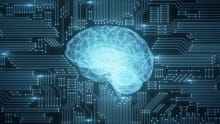How to develop digital dexterity in your organization
Get Set Learn Read similar articles

What is digital dexterity?
Digital dexterity can be considered as the ability to leverage new-age technologies and information in innovative ways to transform existing business practices and succeed in the digital age. Naturally, organizations and employees that have a higher level of digital dexterity are more likely to make the most of new ways of working. Several factors, like organizational agility, workplace culture, leadership priorities, long-term vision, and a willingness to experiment, contribute to an organization’s digital dexterity.
However, despite the importance of being ready for the future and being digitally dexterous, research suggests that organizations are struggling to build digital capacities. For example, one study found the overall readiness for digital transformation in companies has declined from 2012 to 2018. Similarly, Gartner found that 83 percent of leaders struggle to make meaningful progress on digital transformation, and merely 7 to 18 percent of organizations around the world possess digital dexterity.
The role of talent in building digital dexterity
One of the primary reasons why organizations are lagging behind is because of lack of leadership vision aligned to a digital future. Even in organizations where leaders are well-acquainted with digital trends, they fail to make the most of them owing to a dearth in the talent needed to help organizations excel in the digital age. This widening talent gap has disrupted the talent pipeline and induced a never-ending war for quality talent.
Faced with a limited talent supply, organizations will have to nurture digitally dexterous employees internally. These employees must be chosen carefully. In addition to bringing their domain expertise to the table, they will also have to be well-versed with the knowledge and skills needed to transform disciplines across the organizations. Organizations need to empower employees to have conversations around choosing the right digital tools and how to use them effectively to drive growth. Employees, on the other hand, need to learn how to design new business and workplace models with digital being an integral part of the process, alongside innovating existing operations and offerings.
How to develop digital dexterity?
Developing digital dexterity in an organization requires reimagining how we have been undertaking skilling and training so far. We need a tremendous amount of collaboration and coordination throughout the organization to develop mission-driven teams that are goal-oriented and follow the values and beliefs of the organization. A few factors include having clear goals and projects, incentives-based on skills and abilities, minimal hierarchies, free flow of information and feedback, and high levels of trust and transparency. Here are a few other vital strategies to successfully develop digital dexterity in your organization:
Digital basics and strategy: Begin by training teams and leaders about the technologies that already exist and how they are relevant to the organization, employees, and customers. Help them identify and understand new digital tools and technologies that could deliver maximum value; this will help in redesigning and reinventing traditional business models to include a stronger digital dimension.
Focus on key elements of digital transformation: Train your employees on all critical aspects of digital transformation along with a combination of technical and behavior-based topics. These include, but are not limited to disruptive technologies, like automation and AI; data sciences, like data visualization and big data; agile methodologies and culture; social media marketing; computational thinking; cross-functional collaboration and continuous learning.
Learner-centered training: Ensure that the training builds relevant essential capabilities for today and tomorrow so that learners can experience an immediate impact on their work and jobs. Such training should ideally leverage personalized learning tools, use consumer-grade UX to keep learners engaged, support micro-learning, offer learning flexibility, and provide the learner with the best-in-class collection of assets and knowledge sources.
Invest in leadership development: The importance of making leaders digitally dexterous cannot be emphasized upon enough. Leaders and managers need more support and assistance in the form readily accessible training, resources, programs and tools that not only help them develop traditional leadership skills (like how to lead teams through a challenge) but also more contemporary skills (like how to build agile leadership). Furthermore, the definition of what constitutes leadership must expand to include shared leadership, wherein anyone who makes the best use of the training provided can be a leader.
Measure and evaluate: Finally, make sure that there ares data and analytics to keep track of the progress made from all the interventions. Develop robust feedback mechanisms and enable learners to interact with others and collaborate in their learning journey.
History has shown that organizations that have failed to transform digitally have lost out on the advantages and even gone out of business. The future belongs to those who are creating new offerings and models as per the need to not just survive but thrive in a disruptive world. Digital dexterity is a crucial part of this equation, and employers, leaders, and managers cannot afford to fall behind.





